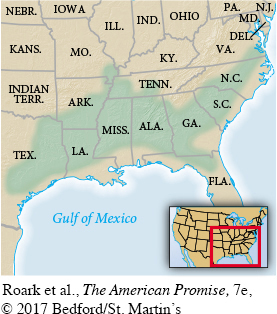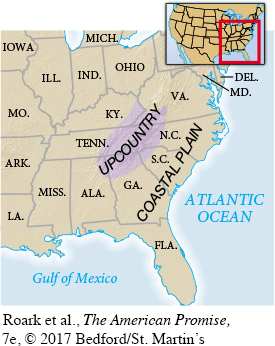The American Promise: Printed Page 367
The American Promise, Value Edition: Printed Page 334
The American Promise: A Concise History: Printed Page 381
The Plain Folk

Most whites in the South did not own slaves, not even one. In 1860, more than six million of the South’s eight million whites lived in slaveless households. Some slaveless whites lived in cities and worked as artisans, mechanics, and traders. Others lived in the country and worked as storekeepers, parsons, and schoolteachers. But most “plain folk” were small farmers. Per-

In an important sense, the South had more than one white yeomanry. The huge southern landscape provided space enough for two yeoman societies, separated roughly along geographic lines. Yeomen throughout the South had much in common, but the life of a small farm family in the cotton belt—